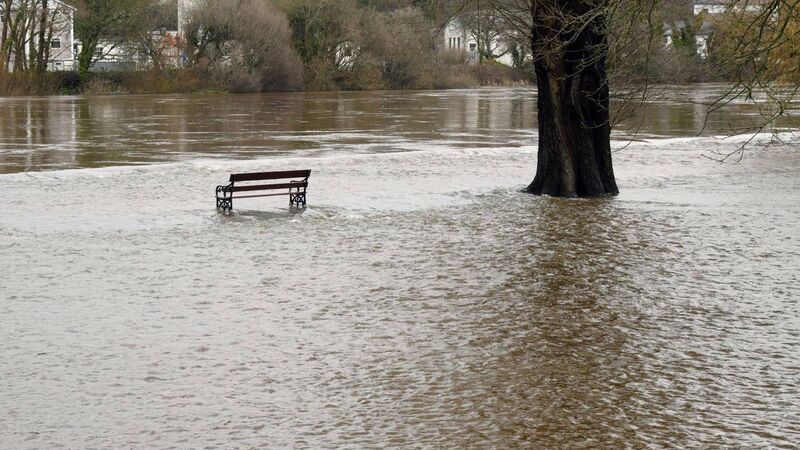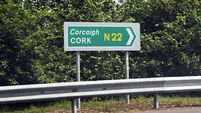Cork's flood early warning system was used to protect the city for the first time last month

Flooding at the Lee Fields, Cork, last month. Data from the city's new flood early warning system was used for the first time to help protect the city from damage. Picture: Denis Minihane
Data from Cork's new flood early warning system was used for the first time to help protect the city from flood damage last month, city councillors were told tonight.
The detail was contained in a report on the city council's management of February's fluvial, or river flood event, which was presented to councillors at a city council meeting.
They were told the flood event between February 22 and 25 was the largest fluvial event in the city since 2015 and serves as a reminder of the urgent need to expedite the OPW’s €150m Lower Lee flood relief scheme (FRS).
The flooding followed days of heavy rain, which swelled rivers in the Lee catchment.
The report showed that, of the 235.9mm of rainfall recorded at Cork Airport across February, 204.2mm fell within the 14 days from February 11 to February 24.
Some 24mm of rainfall was recorded at Cork Airport in just six hours on the night of February 22. Rainfall levels were much higher further up the Lee catchment.
A further 24mm of rainfall was recorded at Cork Airport between noon and 9pm on February 23.
As river levels rose across the catchment, the city used, for the first time, data from the Lee Flood Early Warning System (Fews) to help inform management of the flood event.
Developed by the OPW as part of the Lower Lee FRS, it provides information on forecast rainfall, river levels and estimated flow data for key rivers in the catchment.
It is operating on a trial basis and is due to become fully operational when the city’s flood defence scheme, including some quayside defences, is in place.
However, councillors were told that it proved to be an invaluable resource during February's flood event.
The various agencies were able to identify and quantify peak and low flow periods in these critical watercourses and maintain flows over the waterworks weir at around 350m3/s throughout the flood event — this flow rate was chosen as the threshold as, above it, flooding of properties can become a significant concern.
“More severe flooding in the western areas of the city was almost certainly avoided because of the coordinated efforts of Cork City Council, OPW, and ESB,” the city’s head of operations, David Joyce said.
The completed Lower Lee FRS is designed to allow a flood of 540m3/s to pass the waterworks weir without causing flooding to buildings.
Councillors were also told that over 75 city council staff were directly involved in the flood response, and that the fire service responded to 29 emergency incidents, including a commercial basement fire, a river rescue, and assisting an ambulance crew which got caught in flooding.
Lord Mayor Joe Kavanagh praised everyone involved in the response.
However, Worker’s Party councillor Ted Tynan said he has concerns that the OPW’s flood defence plans won’t protect the city.
Referencing the Save Cork City group, he said: “There are groups concerned that this is the case. They have strong views, some of which are professionally based. It is not too late to invite those people in to City Hall, to sit down and talk the thing through. I would appeal to the CEO to hold out the hand of friendship to these groups.”





